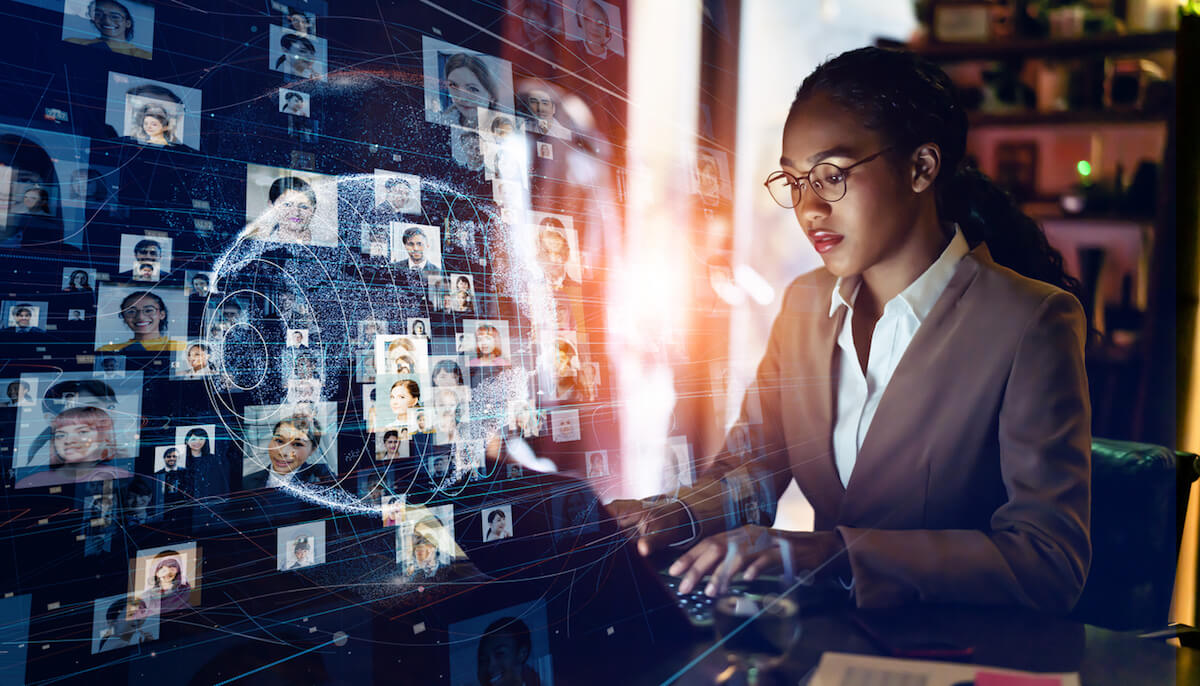This article is the last in a three-part series that builds on the key findings of interviews with symposium participants and other professionals, focusing on AI and talent strategy for 2020 and beyond. Part I discusses the need for experiential learning and successful analytics and AI talent strategies. Part II focuses on the interplay of humanics and technology. The third and final part will offer humanics solutions for the human crisis of COVID-19.
Part III: AI and Talent Strategy in 2020—Key Findings
COVID-19: A Human Crisis and Humanics Solution
COVID-19 is accelerating our reliance on tools and technology, and the pandemic will modernize domains and spike new questions of ethics and privacy. Professionals that will be able to bring data, technology, and humanics skills together will be most successful. “They will be able to develop better ways to enable auto-translation from legacy to modern programming languages to that of progress toward not just Artificial Intelligence, but rather Augmented Intelligence,” Kherlopian says.
That required combination of different literacies demands professionals with the right talent. Temporarily, the talent pool might get bigger as “COVID-19 has caused a spike in movement from the candidate side of the market. Lots of people are seeking to switch companies for a variety of reasons and so for now, one could argue the talent pools are slightly inflated,” Duncan says. Eventually, the professionals that can translate the analytics and AI challenges of COVID-19 into data-driven decision making will be in high demand. And the challenges exist on many different levels. For example, we need to have answers for telemedicine and remote patient monitoring, and we need them as fast as possible. “When people [are dying] in hospitals—you need answers now,” Rao emphasizes.
Indeed, the COVID-19 crisis is already exposing some of the deficiencies of AI, ML, and deep learning. When used intelligently, the technology has the great potential to surpass humans, not only through speed but also in terms of accuracy, by detecting patterns in historical data that humans were unable to identify.
However, these technologies depend on pertinent data in order to find these patterns, and they implicitly accept the notion that today’s circumstances are the same as the ones represented in the data. In other words, AI, ML, and deep learning implicitly assume that what has worked in the past will still work in the future.
However, in the case of COVID-19, the crisis is unparalleled. We can’t feed our technology with data as we used to; we need to operate as humans and bring our experience into the equation, to help us create behavioral and structural models.
Humans can learn lessons from specific circumstances and apply them to unique settings, draw conclusions based on ideas and concepts, and make predictions on potential future scenarios. This, together with our technology and data can help to keep people safe, according to Rao.
Rao offers additional examples of how AI and ML can be effective: “Calculating foot traffic in a building, minimizing contact, organizing a workforce to be self-contained, essentially supporting specific sectors to become resilient. How much extra demand should a consumer good company expect, how many fewer customers will airline companies have, how do we plan for recovery, and when opening up again, how do we help people to stay safe?”
And when it comes to higher education, Northeastern University has offered the successful NU Flex model almost from the beginning of the pandemic, preparing classrooms for in-person learning that meets public health guidelines to prevent the spread of the Coronavirus, as well as remote instruction, says David Madigan, provost and senior vice president for academic affairs at Northeastern.
It is this combination of data, ethics, privacy, and communication—simply the humanics approach— that offers humanics solutions in times of crisis.
Rao uses a healthcare example to illustrate the point: “Epidemiologists need to sit side-by-side with data scientists, coming up with something very fast and practical together with the healthcare specialist, and having the socioeconomic specialist review that from an ethical perspective.”
This is where experiential learning, humanics, data, and technology merge in the need to apply AI and ML as tools guided by humans who design them and use them. It is critical to leverage the data and technology; embed them in the comprehension of what the business, organizational, and/or educational questions are; anchor that understanding in the human ability and innovation to recognize opportunities and barriers; and provide actionable solutions. The COVID-19 crisis has accelerated this understanding.






Related Articles
Is a Data Analytics Bootcamp Worth It?
What is Learning Analytics & How Can it Be Used?
How to Get Into Analytics: 5 Steps to Transition Careers